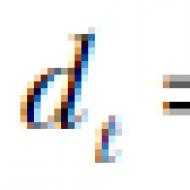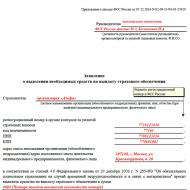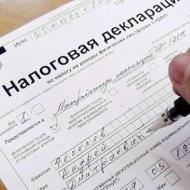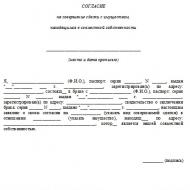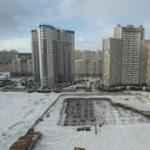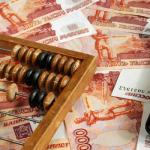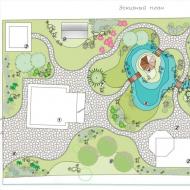
About the European Bank for Reconstruction and Development. European Bank for Reconstruction and Development (EBRD) The European Bank for Reconstruction and Development was created in
As well as the European Union and the European Investment Bank.
The largest shareholders are the USA (10.2% of EBRD capital), Great Britain, Germany, Italy, France and Japan (8.7% each), the Russian Federation (4.1%), Spain and Canada (3.5% each), EU and EIB (3.1% each), the Netherlands (2.5%), Austria, Belgium, Switzerland and Sweden (2.3% each), Poland, Norway and Finland (1.3% each).
The Bank's declared share capital of €10 billion was increased in 1996 to €20 billion and to €30 billion in 2010.
Currently, the Bank is active in more than 30 countries from Central Europe before Central Asia and in the countries of the Southern and Eastern Mediterranean.
The only member of the Bank that has withdrawn from its countries of operations and no longer receives Bank investments is the Czech Republic.
European bank Reconstruction and Development makes investments in both the financial and real sectors of the economy, investing in the creation of new enterprises and directing investments into existing companies.
The EBRD is active in the following economic sectors: agribusiness, information and communication technologies, municipal infrastructure, legal reform, Natural resources, industrial production and services, transport, sustainable resource management and climate change, financial institutions, private equity funds, energy, nuclear safety.
In 2015, the bank's total investments reached a record 9.4 billion euros. The EBRD's expected profit for 2015 is 0.8 billion euros.
The highest governing body of the EBRD is the Board of Governors, to which each shareholder appoints its representative and one deputy.
The Board of Directors (23 people) is responsible for management general activities Jar. Directors are elected by the Board of Governors for three years, with the possibility of re-election for a second term.
The President is the legal representative of the EBRD. The President heads the Bank's staff. He is responsible for organizing work, appointing or dismissing officials and employees in accordance with the rules established by the Board of Directors. He is elected by a majority vote of the Board of Governors for a four-year term and may be re-elected for a second term. This post is currently held by British Representative Suma Chakrabarti, who took office on July 3, 2012.
The official languages of the EBRD are English, German, French and Russian.
The headquarters is located in London (UK).
Russia, as the legal successor of the USSR, has the status of founder of the European Bank for Reconstruction and Development. The EBRD has been one of the largest investors in the real sector of the Russian economy for many years. In total, from 1991 to 2015, the accumulated volume of EBRD investments in Russia amounted to 24.3 billion euros (792 projects).
In January 2016, the European Bank for Reconstruction and Development reported that 2015 was the first year in which it did not launch new projects in Russia.
The material was prepared based on information from RIA Novosti and open sources
Protocol:
Year of formation: 1991
Bank shareholders: 66 states and 2 international organizations: Australia, Austria, Azerbaijan, Albania, Armenia, Belarus, Belgium, Bulgaria, Bosnia and Herzegovina, Great Britain, Hungary, Germany, Greece, Georgia, Denmark, Egypt, Israel, Ireland, Iceland, Spain, Italy, Kazakhstan, Canada, Cyprus , China, Kyrgyzstan, Latvia, Lebanon, Lithuania, Liechtenstein, Luxembourg, Macedonia, Malta, Morocco, Mexico, Moldova, Mongolia, Netherlands, New Zealand, Norway, Poland, Portugal, Russia, Romania, Serbia, Slovakia, Slovenia, USA, Tajikistan, Turkmenistan, Turkey, Uzbekistan, Ukraine, Finland, France, Croatia, Montenegro, Czech Republic, Switzerland, Sweden, Estonia, South Korea, Japan, European Union, European Investment Bank.
History of education: The European Bank for Reconstruction and Development (EBRD) was created in 1991, during the collapse of the communist system, to support the development and strengthening of the private sector in a democracy. Today the EBRD uses investment as a tool to help establish market economy and democracies in 36 countries on three continents. The EBRD is the largest investor in the region and, in addition to allocating its own funds attracts significant volumes of direct foreign investment.
Operating activities: In all its investment operations, the EBRD must: contribute to the development of a full-fledged market economy in the country, i.e. ensure impact on the transition process; take risks to assist private investors without driving them out of the market; apply sound management principles banking activities. Through its investments, the EBRD contributes to: structural and sectoral reforms; development of competition, privatization and entrepreneurship; strengthening financial organizations And legal systems; developing the necessary infrastructure to support the private sector; implementation of a reliably operating system corporate governance, including in order to solve environmental problems.
The information was prepared based on materials from the EBRD website www.ebrd.com
The EBRD stimulates co-financing and attraction of foreign direct investment; attracts domestic capital; provides technical assistance.
Managment structure: The powers of the EBRD are the prerogative of the Board of Governors, to which each member appoints a governor (usually the Minister of Finance). The Board of Governors delegates most of its powers to the Board of Directors, which is responsible for setting the strategic direction of the EBRD. The President, elected by the Board of Governors, is the legal representative of the EBRD. The President manages the day-to-day activities of the Bank under the direction of the Board of Directors.
The headquarters of the EBRD is located in London.
Address: One Exchange Square, London EC2A 2JN, United Kingdom
Telephone:+44 20 7338 6000 Fax: +44 20 7338 6100
The European Bank for Reconstruction and Development was created during the collapse of the communist regime in Eastern Europe, in 1991. At that time, the former states of the Soviet Union urgently required support for the formation of a renewed private sector under the reigning democracy. Currently, EBRD instruments are being used effectively to promote market economies and adaptation to democracy in 34 countries around the world.
Main activities of the EBRD
The European organization operates only for commercial purposes; charity is not part of its tasks. The EBRD lends only to specific projects. In addition to targeted lending, the bank makes direct investments, provides technical support. Authorized capital financial institution equates to 10 billion dollars, and the ECU level corresponds to 12 billion dollars. A controlling stake in the organization (51%) is owned by EU countries. Contributions to the organization are accepted in any freely convertible currency. The main goals for which the European Bank for Reconstruction and Development was originally formed are:
- Financing of road transport supplies.
- Financing and supply of equipment.
- Providing technical assistance to government and commercial structures and enterprises.
- Lending to the private sector, which accounts for about 60% of the total amount of loans provided.
Subtleties of the EBRD's work

The bank's unit of account is U.S. $ and ECU together with the Japanese yen. Branches of the financial giant are opening and providing a full range of services in all countries that took part in the establishment of the institute. Offices operate in Russia and Ukraine. The bank carefully controls intended use all the funds it provides as loans. In addition to financing, the International Bank issues recommendations and organizes a wide variety of training courses for bankers and managers. The Institute provides professional help in food distribution. It is worth saying that the financial institution does not have its own funds to provide technical support. It accumulates funds for this purpose through funds operating in EU countries.
Specifics of activity

The main format of EBRD financing is loans and investments in or guarantees. The main office of the organization is located in London. Important participants in the association are not only the states of the world, but also the European Community with the European Investment Bank. Each member state of the organization (58 countries in total) has its own representative on the board of governors and on the board of directors. The main advantage that distinguishes the European Bank for Reconstruction and Development is its deep knowledge of the region in which it is planned to conduct financial operations. The management of the institution is well aware of all the complexities and potentials of the countries with which the partnership is being conducted. The EBRD (bank) offers its support only to those states that follow a market economy, pluralism or multi-party democracy. Next strong point Institute is the ability to take risks that allow you to significantly expand the boundaries of commercial potential. The EBRD meets the highest credit rating AAA, which makes it possible to attract capital for international market on the most favorable terms.
Features and more
The International Bank provides comprehensive support to participating countries in carrying out not only structural, but also sectoral reforms, including demonopolization and privatization, which are aimed at integrating the private economy into world economy. To achieve this task, active assistance is provided.
- Small and medium-sized enterprises are helped in organizational matters, in terms of modernization and expansion of production, in building a competitive policy.
- The Bank facilitates the mobilization of both foreign and national capital. Support is provided in proper management of funds.
- The organization promotes investment in production to create competitiveness and to improve the quality of life and increase productivity.
- Helps in technical training, in financing, in project implementation, in stimulating the capital market, in environmentally sustainable development, in turning into reality large-scale projects in which several recipient countries are simultaneously involved.
Commitment to the environmental aspect

In addition to multilateral lending, the EBRD is a strong advocate of green prosperity. Each of the bank's projects is subject to strict requirements in the aspect of financing the improvement of municipal and other infrastructures. Energy-saving technologies are financially encouraged. The area of nuclear safety is another priority area for the EBRD. Russia and some other countries are under close control of the bank in this matter. The financial institution is responsible for the distribution of funds that are created to minimize the dangers during the operation of nuclear power plants in different regions of the world. The International Bank, working simultaneously with many countries of the world, has its own approach to each state. It not only develops, but also implements programs tailored to the needs of each member state of the system.
EBRD in Ukraine

The European Bank for Reconstruction and Development is one of the largest investors in Ukraine. The financial institution offers its support in various fields of activity, including financial sector and small commercial companies. Priority directions for a financial institution are: Agriculture and municipal services and energy sector, television communications. The Chernobyl Shelter Fund is also under the control of the EBRD. Ukraine receives assistance from the organization in terms of restoring Chernobyl, turning it into an absolutely safe and environmentally friendly zone.
Actual assistance to Ukraine

The main office of the EBRD in Ukraine operates in Kyiv. The staff of specialists includes the best experts from various sectors of the economy. An active dialogue with the state government is constantly maintained. Huge contribution The European Bank contributes to the prosperity of business and the improvement of the investment climate. In 2015, the financial institution plans to invest about $3.5 billion in projects to develop the state’s economy. The funds are planned to be used for Ukrainian pipes, to increase the number of jobs, to develop Ukrainian companies, to infrastructure projects, to education and medicine. This will be the most global investment that can restore states.
EBRD and Russia

The EBRD against the backdrop of recent events and economic situation in Russia presented an updated, but worsened forecast for economic development. In 2015, according to bank representatives, GDP is expected to decline by about 4.8%. The unhealthy investment environment that emerged after the imposition of sanctions on the state in 2014 has only been exacerbated by the decline in oil prices. Consumer demand will be reduced due to the depreciation of the national currency and an increase in loans. Unaffordable retail loans will be unaffordable for ordinary families, causing demand to fall by 50% last year. The collapsing Russian economy will leave a negative imprint in 2015 on the development of countries such as Kazakhstan and Azerbaijan, Turkmenistan and Belarus, and Armenia. According to EBRD forecasts, Russia could end up in a much worse situation if oil prices continue to fall and the conflict with Ukraine worsens.
The European Bank for Reconstruction and Development (EBRD) was established in 1991 to assist countries in Central and of Eastern Europe and the Commonwealth of Independent States (CIS) in the formation of a market economy after the collapse of the administrative-command system. In facilitating the transition to a market-oriented economy, the Bank provides direct financing for private sector activities, structural adjustment and privatization, as well as financing for the infrastructure that supports such activities. Its investments also help to build and strengthen organizational structures. The EBRD's main forms of financing are loans, equity investments (shares) and guarantees.
Based in London, the EBRD is an international organization with 60 members (58 countries, the European Community and the European Investment Bank). Each member country is represented on the Bank's Board of Governors and Board of Directors.
The organization arose at a time when the socialist political system was changing in the states of Central and Eastern Europe and the countries of the former Soviet bloc needed support to create a new private sector in the transition to a market economy.
The EBRD is the largest investor in the region and, in addition to its own funds, attracts significant amounts of foreign direct investment. However, although its shareholders are government-owned, the EBRD invests primarily in private enterprises, usually together with its commercial partners.
It provides project financing to banks, enterprises and companies, investing in both new production and existing companies. It also works with state companies in order to support the processes of privatization and structural reorganization thereof, as well as improve utilities. The EBRD uses its close relationships with governments in the region to pursue a policy of creating an enabling environment for business.
Like the International Bank for Reconstruction and Development, the EBRD raises funds by issuing bonds. A feature of the EBRD’s operations is the widespread attraction of funds to national currencies countries of Eastern Europe, including the Russian ruble.
EBRD Charter
The EBRD's charter provides for its activities only in those countries that are committed to the principles of “democracy”. Caring for the environment is constituent element a sound corporate governance system and appears in all EBRD investment activities.
In all of its investment activities the EBRD must:
- promote the establishment of a full-fledged market economy in the country, that is, ensure the effect of influencing the transition process;
- take risks to assist private investors without driving them out of the market;
- apply rational principles of conducting banking activities.
Through its investments, the EBRD contributes to:
- carrying out structural and sectoral reforms;
- development of competition, privatization and entrepreneurship;
- strengthening financial institutions and legal systems;
- developing the necessary infrastructure to support the private sector;
- implementation of a reliably operating corporate governance system, including for the purpose of solving environmental problems.
As a catalyst for change, the EBRD:
- stimulates co-financing and attraction of foreign direct investment;
- attracts domestic capital;
- provides technical assistance.
Functions of the EBRD
The EBRD supports member countries to undertake structural and sectoral reforms, including de-monopolization and privatization, to fully integrate their economies into the global economy by promoting:
- organization, modernization and expansion of production, competitive and private enterprise activities, primarily small and medium-sized enterprises;
- mobilization of national and foreign capital and their effective management;
- investments in production in order to create a competitive environment and increase its efficiency, quality of life and improve labor productivity;
- providing technical assistance in the preparation, financing and implementation of projects;
- stimulating and encouraging the development of capital markets;
- implementation of solid and economically feasible projects involving more than one recipient country;
- environmentally sustainable development.
EBRD governance structure
1. The Board of Governors, in which each member of the EBRD is represented by one governor and one deputy, is the highest body determining the main directions of the Bank's activities. Meetings are held once a year, and additional meetings may be called by the Board of Governors or the Directorate. The Board of Governors may fully or partially delegate its powers to the Directorate, with the exception of admitting and determining the conditions for admitting new members, changing the size authorized capital, suspension of membership, election of directors and president, determination of salaries of directors and deputy directors, approval of the general balance sheet, amendment of the Charter and termination of the Bank's operations. At the same time, the Board of Governors retains full power in relation to all tasks entrusted to the Directorate. The number of votes each member has is equal to the number of votes of his subscribed shares in the share capital of the Bank.
2. The President of the EBRD is elected for a term of four years (re-election is possible) by the Board of Governors by a simple majority of votes of the total number of governors. The President manages current affairs according to the instructions of the Directorate. He presides over meetings of the Directorate and may participate in meetings of the Board of Governors. He is an authorized representative of the Bank. While leading the Bank's staff, the President, in accordance with the rules established by the Directorate, is responsible for organizing the work of the EBRD, as well as for the hiring and dismissal of staff members. Vice Presidents are appointed on the recommendation of the President by the Directorate, which determines the terms of office, as well as their powers and functions.
Presidents of the bank:
- April 1991 - July 1993: Jacques Attali
- July 1993 - September 1993: i. O. Ron Freeman
- September 1993 - January 1998: Jacques de Larosiere
- January 1998 - September 1998: i. O. Charles Frank
- September 1998 - April 2000: Horst Kohler
- April 2000 - July 2000: i. O. Charles Frank
- July 2000 - July 2008: Jean Lemierre (French: Jean Lemierre)
- July 2008 - present Thomas Mirow (German: Thomas Mirow)
3. The board of directors is the main executive body. He is in charge of current issues of the Bank's work. The Directorate makes decisions regarding the provision of loans, regarding guarantees for equity investments, attraction of loans and provision of technical assistance. He approves the EBRD budget.
4. Advisory Council on issues environment consists of environmental experts from Central and Eastern Europe and OECD countries, as well as consultants on environmental policy and strategy related to the Bank's environmental mandate.
EBRD capital
The Bank's capital resources include authorized capital, borrowed funds and funds received for the repayment of loans or guarantees of the Bank, income derived from the Bank's investments, and any other financial resources and income not forming part of the resources of its special funds. In accordance with the Founding Agreement, a number of funds were created:
- with the participation of Denmark, Iceland, Norway, Finland and Sweden - Baltic Special investment fund promoting the private sector by supporting small and medium-sized enterprises in the Baltic countries, as well as the Baltic Special Technical Assistance Fund to promote the development of market economies in these countries;
- Russian Special Fund for Small Businesses for the Development of the Private Sector;
- Russian special fund for technical assistance to small businesses.
The doubling of the Bank's capital to €20 billion became a reality in April 1997. This enabled the Bank to continue to meet growing demand for its services and maintain financial self-sufficiency.
EBRD financing
EBRD financing is project specific and is provided to strengthen financial institutions or structural reorganization large companies, and in the form of small loans to companies with only a few employees. Large investments or infrastructure projects (both private and with the participation of local or Central authorities) are financed by the Bank directly, often jointly with partners. Small investments are made through financial intermediaries: local banks or investment funds.
A key feature of the EBRD that sets it apart from other institutions is its support for the private sector, which is the essence of the EBRD's Charter, which requires at least 60% of the Bank's funding to go to the private sector.
The Bank strives to help primarily companies experiencing difficulties in obtaining financing from other sources. It places special emphasis on small and medium-sized enterprises, which play a critical role in the development of the private sector. Acting like commercial Bank and a development bank, the EBRD provides funds for private enterprises or those that may be privatized, as well as for physical and financial infrastructure projects in support of the private sector.
EBRD performance indicators
In 2004, the bank financed 129 projects for total amount 4.1 billion euros, of which Russia received 1.24 billion euros. Total for 1991-2008 The bank issued 33 billion euros to Eastern European countries for 2.2 thousand projects, of which Russia accounted for more than 5.9 billion euros. In 2004, the bank's profit amounted to 297.7 million euros. The Bank's own capital at the end of 2008 amounted to 11.8 billion euros.
(12) An investment mechanism created in 1991 by 61 countries and two international organizations to support market economies and democracies in 34 countries from Central Europe to Central Asia. As an international organization, the EBRD enjoys a number of privileges, such as legal immunity for its staff
"Story"
Created in 1991 by 61 countries and two international organizations to support market economies and democracy in 34 countries - from Central Europe to Central Asia. As an international organization, the EBRD enjoys a number of privileges, such as legal immunity for its staff.
"Management"
The current President of the EBRD is Sir Suma Chakrabarti, who took office in 2012. The President directs the work of the Bank under the general leadership of the Board of Directors.
"Board of Directors"
The EBRD's shareholders include 64 countries, the European Union and the European Investment Bank. Each shareholder has its own representative on the EBRD's Board of Governors, which is the Bank's highest governing body.
"News"
The EBRD offered to write off the USSR's debt in exchange for giving up nuclear weapons
The head of the European Bank for Reconstruction and Development in 1991 suggested that the British Prime Minister write off external debt The USSR in exchange for Moscow's renunciation of nuclear weapons, declassified documents say
Danylyuk hopes to expand EBRD investments in Ukraine
The minister also said that during the forum events in Davos he met with the President of the European Union investment bank, with whom I discussed the use of the provided funding.
Ukrainian Finance Minister Oleksandr Danylyuk hopes to see increased technical assistance and investment from the European Bank for Reconstruction and Development in Ukraine this year.
EBRD withdraws from Agri Europe capital in Ukraine and Serbia
The European Bank for Reconstruction and Development (EBRD) has exited Agri Europe, a leading agribusiness group registered in Cyprus and mainly active in Serbia and Ukraine.
This was reported by the EBRD press service.
“Our collaboration with Agri Europe's core management has resulted in a significant improvement in the management structure. Over the years, the company has emerged as a leading and most active player in various industries.
EBRD will help reform the Deposit Guarantee Fund
The European Bank for Reconstruction and Development will help adapt the work of the Individual Deposit Guarantee Fund in accordance with legal standards and modern challenges.
The EBRD together with the Fund will develop a policy for organizing financial statements in accordance with international standards, will introduce a comprehensive training system management reporting. This will support high-quality decision-making at the level of the executive directorate and administrative board of the Fund.
New EBRD President Sir Suma Chakrabarti starts work
British citizen Sir Suma Chakrabarti will officially begin work as president of the European Bank for Reconstruction and Development (EBRD) on Tuesday, a position he will hold for the next four years.
Guy Harrington will represent the European Bank for Reconstruction and Development (EBRD) on the board of directors, replacing the EBRD's previous board representative, Ilkku Salonen, who left this position.
The EBRD called Ukraine's GDP growth forecast in 2013 "too optimistic"
The European Bank for Reconstruction and Development (EBRD) in Ukraine considers the forecast too optimistic GDP growth Ukraine in 2013 at the level of 4.5%, which is included in the draft budget for the next year.
The BBC Book of the Year competition now has a children's category
“Works submitted to this competition, which will be held in collaboration with the Cultural Program of the European Bank for Reconstruction and Development (EBRD), will compete in two categories: BBC Book of the Year 2012 and BBC Children's Book of the Year 2012,” the statement notes.
Sverdlovsk region: EBRD intends to finance investment projects
Chairman of the Sverdlovsk government Denis Pasler discussed with the head of the EBRD representative office in the Ural Federal District and Perm region Evgeniy Okhrichter issues of implementation of investment objects.
EBRD leaves AvtoVAZ
AvtoVAZ and General Motors become the sole owners of the GM-AvtoVAZ joint venture. One of the owners of the company, the EBRD, is leaving authorized capital enterprise and sells its share.



